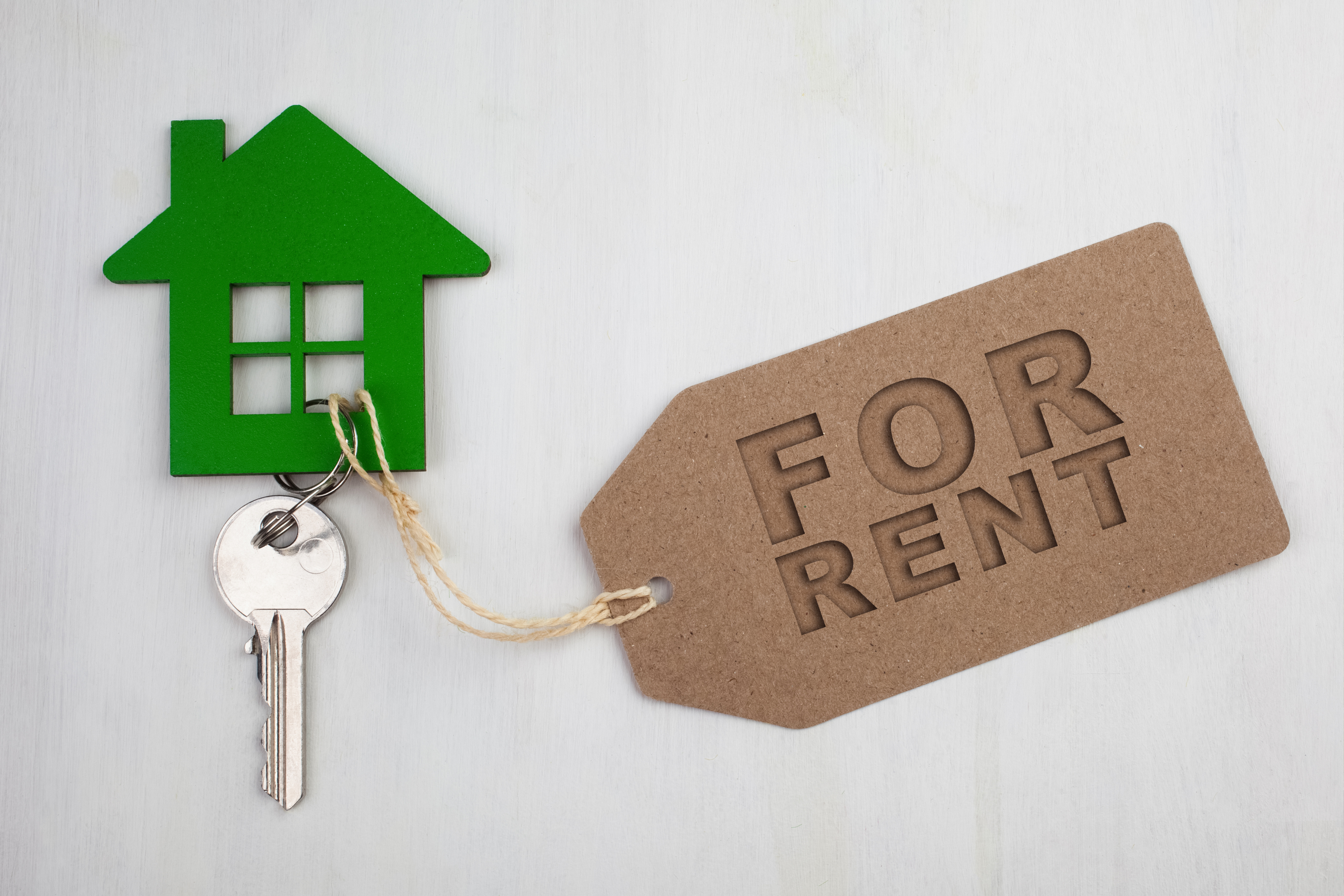this is a page for
Daily Archives: April 23, 2024
With the college sports season’s thrilling climax, this is also an exciting time for real estate investors who own rentals in college towns that are being given a high profile. These landlords have likely long known that student rentals are one of the most lucrative places to make ongoing high yields.
Having the national spotlight focus on a college town where you invest is like having huge ads placed outside your property to attract future tenants. Colleges in the South and Midwest generally mirror real estate in those areas, which have provided some of the strongest cap rates for investors in recent years.
Here’s a closer look at the towns and cities where great sports teams pair with great investments. We ranked the college towns based on their rent-to-price (RTP) ratio. An RTP is calculated by dividing the gross monthly rent by the purchase price (or, in subsequent years, by the market value). A standard RTP that investors use is around 1%, often called the 1% rule, although an RTP above 0.6% is also considered good. Thus, if a property rents for $2,000/month and has a market value of $2,000, the RTP would be $2,000/$200,000, which is 1%.
It’s important to note that every market will have its fair share of ZIP codes with high and low RTPs. There’s cash flow to be made in every market—you just need to find it.
The Rent-to-Price Ratio of Each College Market
1. The University of Alabama (Tuscaloosa, Alabama): 0.76%
2. University of Dayton (Dayton, Ohio): 0.67%
3. Texas Tech (Lubbock, Texas): 0.66%
4. Northwestern (Chicago): 0.64%
5. University of South Carolina (Columbia, South Carolina): 0.64%
6. Indiana State (Terre Haute, Indiana): 0.63%
7. Texas A&M (College Station, Texas): 0.63%
8. Mississippi State (Starkville, Mississippi): 0.62%
9. University of Illinois (Champaign, Illinois): 0.62%
10. High Point University (Greensboro, North Carolina): 0.60%

Need a Lease Agreement?
A FREE account gets you access to over 200 free forms. Upgrade to a paid account (monthly, annually, or lifetime)
EZLandlord Forms Is Offering 15% 𝙊𝙛𝙛 For New Customers!
We cannot recommend these guys enough!
👉 State Specific Leases 👉 400 Forms to make your landlord-tenant relationship top notch 👉 200 FREE forms for those not ready to purchase 👉 4.8 Rating with over 5000 Reviews 👉 Pro Members get access to ALL leases and forms for $12 per month OR $75 if you purchase the annual membership 👉 YOU CAN BUY LIFETIME FORMS for $399
USE CODE 𝐒𝐓𝐀𝐂𝐈𝐄𝟏𝟓 to get 15% OFF ALL first-time purchases, EVEN THE LIFETIME FORMS!
A Closer Look at the Top College Towns
Tuscaloosa, Alabama
The University of Alabama is a big draw for real estate investors. However, the Alabama Crimson Tide isn’t the only reason to invest here.
Like other more northerly Alabama cities of Birmingham and Huntsville, Tuscaloosa County ticks the boxes for good investment criteria. It has low unemployment (2%), a population growing by 2% each year, a decent median income of $58,620, and a generally affordable median rent of $1,549 with a robust rental growth of 7%, which means investors can increase their cash flow each year. With a median home price of $205,030 and year-over-year price growth of 2%, Tuscaloosa is affordable, stable, and profitable.
According to the Tuscaloosa County Economic Development Authority, the main employers in the small city of 266,638 are the University of Alabama (6,839), Mercedes-Benz (4,500), and the DCH Regional Medical Center (3,444). Each long-established company is a stable source of employment.
Dayton, Ohio
Known as the birthplace of aviation, Dayton, Ohio’s real estate business takes flight thanks to its affordable median home price of $185,000, its 3% annual appreciation, reasonably affordable rent of $1,234, and main employer, the Wright-Patterson Air Force Base, with its workforce of 30,000 people. Other big employers in the area are Premier Health Partners (14,135) and Kettering Health Network (5,029). However, it ranks just below Tuscaloosa due to its 3% unemployment and stagnant population growth.
Lubbock, Texas
The 11th largest city in Texas, Lubbock enjoyed a stellar ranking in a 2023 survey of 500 college towns for Best Real Estate Investment Potential. That survey was echoed in BiggerPockets data, with a low 3% unemployment rate, a modest population increase (1%), a healthy median income of $59,228, an affordable median rent of $1,342, and an annual rent growth of 1%. Homes are also affordable, with a median price of $202,763, though price growth is stagnant.
Texas Tech is the biggest employer in the city. Various other employers contribute to diverse business infrastructure in manufacturing, agriculture, wholesale retail, and healthcare, including Covenant Health, United Supermarkets, Convergys, and Tyco Fire Protection Products.
However, Lubbock is more than a place to invest in real estate, which could be part of its charm. It was ranked No. 8 in 2022 for U.S. cities with the best work-life balance, No. 1 in 2023 for the best cities overall for recent college graduates, No. 6 (2022) for the best mid-size city business climate, and No. 10 (2022) for the best city for raising families.
Chicago, Illinois
Located 40 minutes outside Chicago in Evanston, Northwestern both benefits and suffers from being located in the metro area of a major city. Unemployment is at 4%. However, home appreciation is at 6%.
For investors, it’s interesting to note that the median income is $82,914, yet the median cost of a home is around $300,000—generally affordable by today’s standards. However, as major corporations move out of big Northeast cities to warmer states and remote work takes hold, Chicago has felt the hit with a few big defectors.
The Windy City has as experienced a small (-1%) population loss over the past year. Still, with established universities, hospitals, finance sectors, new tech businesses, and other attractions and businesses of a major city, along with relatively modest real estate prices compared to other major cities, Chicago remains a worthwhile real estate investment.
Final Thoughts
Successful college sports teams often come from successful universities, well embedded into the economic fabric of the vibrant city in which they reside, so it should come as no surprise that many of these cities also make for good real estate investments. It’s unsurprising to learn that many successful real estate investors started their journey as students, renting out rooms in a home they owned and building their empires from there. Whether you are an investor or want to kick-start your kids’ investing career, looking at cities with a successful college sports team will steer you in the right direction.

Did you enjoy this article?
This is an example of what is included on our FREE weekly newsletter, Landlord Weekly.
Subscribers get access to our free forms, email templates, and guides! As well as…
▪️Landlord Tips ▪️ Early Access to Our Blogs ▪️ Landlord Specific Articles by Other Industry Pro’s ▪️ Podcast Links
To check out a sample of our newsletter, click one of the links below👇
The media tends to side with tenants and take a negative view of landlords overall. One notable exception was an episode of HBO’s Silicon Valley, where the hapless Jared has tried for over a year to evict a nonpaying “professional tenant” who is currently subleasing Jared’s unit through Airbnb because California’s landlord/tenant laws are so biased in favor of the tenant that an eviction can take close to an eternity.
At the same time, Erlich (who rents the rooms in his home to Jared and the other characters trying to build the fictional tech company Pied Piper) is demanding one of his tenants and soon-to-be-supervillain Jian Yang leave his house (video contains NSFW language) and unfortunately lets Jared’s situation slip. This inspires Jian Yang to decide that instead of leaving, as Erlich requested, he would instead stay and simply stop paying rent.
While that episode was quite amusing, some municipalities seem to be trying to transcend parody into something beyond satire. New York, for example, just arrested a woman for changing the locks on a squatter in the $1 million home she inherited.
According to a New York Post story about the incident:
“[Adele] Andaloro claims the ordeal erupted when she started the process of trying to sell the home last month but realized squatters had moved in—and brazenly replaced the entire front door and locks.
“She said she got fed up and went to her family’s home on 160th Street—with the local TV outlet in tow—on Feb. 29 and called a locksmith to change the locks for her.”
Understandable, but not a wise course of action. The two got into a heated argument, and the police were eventually called. As the New York Post article notes, “Under the law, it is illegal for the homeowner to change the locks, turn off the utilities, or remove the belongings of the ‘tenants’ from the property.” The word “tenant” is an extraordinarily generous euphemism in this case.
What complicates matters more is that in New York City, someone can claim “squatters rights” after being in a home for just 30 days. But “’[b]y the time someone does their investigation, their work, and their job, it will be over 30 days and this man will still be in my home,’ Andaloro said.” So, that left Andaloro between a rock and a hard place:
“Andaloro was ultimately given an unlawful eviction charge because she had changed the locks and hadn’t provided a new key to the person staying there, the NYPD confirmed to The Post. She was slapped with a criminal court summons, cops added.”
This case may be exceptional, but it is by no means unique. Also, in New York, a couple bought a $2 million “dream home” to care for their son with disabilities but couldn’t move in because a squatter had beat them to it. In another home, a squatter completely destroyed a property in the Rockaways, where dozens of emaciated dogs and cats were trapped inside on the verge of death.
The New York Post quotes one attorney saying such cases have increased “40% to 50% in similar cases in the wake of COVID.”
This is made all the more frustrating by New York’s apparent lack of interest in prosecuting normal crimes. In 2022 and 2023, over half of felonies were downgraded to misdemeanors and misdemeanor cases resulting in a conviction plummeted from 53% in 2019 to 29% in 2022.
Meanwhile, New York’s crime rate skyrocketed in 2022.

Fortunately, crime has ebbed a bit in New York City (and the rest of the country in 2023 and so far into 2024). But I feel pretty confident in saying it’s not because people like Adele Andaloro are being arrested.
I should also note that this isn’t just a problem in New York. On the other side of the country, in Oregon, an investor posting as a squatter explained on X (formerly Twitter) how he could “steal a property” due to Portland’s laws on the subject.
Indeed, I would have thought such problems would be more acute in California, which has the second-highest homeless rate in the country. Unfortunately, California chose a “housing first” policy instead of a “shelter first” policy to help homeless people get off the street. Providing housing for each homeless person is, not surprisingly, extremely expensive, especially in high-priced places such as Los Angeles and San Francisco.
Getting back to New York: Despite this absurd story, the city has done a mostly good job with its homeless population and has been able to shelter 96% of its homeless population, whereas California shelters a paltry 38%. While some of this may be due to the more temperate weather in most of California as compared to New York, the fact that three times as many homeless people died in Los Angeles as in New York City in 2020-2021 (1,988 to 640) shows that it’s not all that.
Looking for more information or a support network on the investing side of rental properties?
Check out BiggerPockets! They provide resources and tools to help people learn about real estate investing and build wealth through rental properties. Their website offers a community of over 2 million members, educational content, networking capabilities, and software tools. BiggerPockets also publishes books and podcasts about real estate investing.
The Erosion of Property Rights
The story of Adele Andaloro really shows less about how municipalities choose to help their homeless population and more about the erosion of property rights in many places throughout the United States. We’ve seen this in the deluge of passed and proposed legislation targeting property owners throughout the country.
Now, I should note that Andaloro made a huge mistake. As indefensible as her situation was, she should not have taken the law into her own hands, especially in a state as unfriendly to landlords as New York.
I should also note that landlords have more leverage in economic transactions than tenants do, and so the law does need to protect tenants. Landlords, after all, are the ones who write the leases. So, it’s incumbent upon the government to make sure the landlord cannot put any overly arduous or unfair clauses in that lease.
Laws that require properties to be maintained or 24-hour notice to be given to a resident before entry or mandating evictions go through the court system and not be done with hired muscle are all legitimate and necessary in any functional and just society. But these “rights” have clearly gone way too far in many municipalities. For example, Denver just passed a law preventing landlords from demanding a tenant leave for any reason other than “just cause,” i.e., “nonpayment of rent, violation of lease terms, nuisance, and engaging in illegal activities.”
This means if a property owner ever intends to sell their house, move into it, or give it to their kids, they are simply out of luck. (Other states and cities have passed laws requiring landlords to offer extended notice and pay moving costs in such cases, which I actually think is reasonable.)
Regarding so-called squatters rights, legally speaking, they are supposed to simply be that “[a]n individual may claim rights as a squatter if they are roommates, tenants, or occupying property that is abandoned or not used.” This is just adverse possession, a somewhat odd law that transfers property from the owner to its occupant if the occupant has continuously occupied the property for a certain length of time without refraining from the owner. States vary from three years (Arizona) to 30 (New Jersey) on just how long that needs to be.
But in many cases, squatting has become synonymous with trespassing. And instead of punishing the perpetrator, the victim is the one who must stomach the cost.
In Missouri, where we do most of our investing, “just like most other states, [Missouri] doesn’t have special laws regarding squatters’ removal. Therefore, to evict a squatter, you’ll need to go through the state’s eviction process.” This means for the offense of having someone break into our property, we have to pay to evict them and lose out on the opportunity cost of any rental income that could come in during that time.
This is the case in most states, so the big question to investors is, how friendly are the landlord/tenant laws where you invest? Because if you do get a squatter, the question becomes how hard it will be to evict them. Indeed, I had gotten several, and while the courts here are rather slow, they are thankfully much faster than in New York.
(In some areas, it is also sometimes worth boarding the windows and doors, at least during renovation, to prevent a squatter from getting in.)
SparkRental.com did a study and came up with a list of the most renter-friendly and landlord-friendly states. It looked like this:

Back in 2020, BiggerPockets also did an analysis with similar results. It found the five most landlord-friendly states to be:
- West Virginia
- Arkansas
- Louisiana
- North Carolina
- Alabama
And the five most tenant-friendly (or perhaps most antagonistic to landlords) were:
- Vermont
- Delaware
- Rhode Island
- Maine
- South Dakota
Moving Forward
While cases like Adele Andaloro make the headlines, overall, they are still rather rare. You don’t want to become paranoid.
Still, in a time when such farcical cases are becoming more commonplace, and property owners are under continued legislative attack, it’s important to know which places are the most amenable to property ownership. This is especially true for buy-and-hold investors.
Indeed, in the least landlord-friendly places (New York being one of them), I would probably lean away from investing in buy-and-hold residential real estate there. (Commercial, fortunately, doesn’t have these problems.)
In other cities and states that are still tough on landlords but below the farce, I would still recommend caution. Budget for higher administrative and legal costs and a higher economic vacancy factor. And make sure any potential acquisition still works with such restraints.
Finally, make sure to understand your local laws, and no matter how ridiculous they may be, don’t take the law into your own hands.
Did you enjoy this article?
This is an example of what is included on our FREE weekly newsletter, Landlord Weekly.
Subscribers get access to our free forms, email templates, and guides! As well as…
▪️Landlord Tips ▪️ Early Access to Our Blogs ▪️ Landlord Specific Articles by Other Industry Pro’s ▪️ Podcast Links
To check out a sample of our newsletter, click one of the links below👇
The automation of rental property management has revolutionized how landlords operate, streamlining tasks and enhancing efficiency beyond measure. From showcasing vacancies to collecting rent, landlords are automating nearly every aspect of their business, saving time and resources while improving tenants’ experiences.
In the digital age, there’s simply no going back once tech has advanced. A modern touring and renting procedure makes all the difference to today’s tenants, and we may be heading into a renters’ market. To combat this, landlords can identify where antiquated practices are replaceable with tested tech.
The United States Census Bureau asserts that the national rental vacancy rate has reached 6.6%. This is a 13.8% increase from the average vacancy rate in 2022
1 Garnering Interest with Virtual Tours
Virtual tour software showcases available units online, giving an elevated remote experience for inquiring tenants. People are doing more research than ever and are more likely to schedule an in-person tour after a virtual tour than with a listing that leaves them with questions. This saves time for both parties and widens the property’s reach beyond geographical limitations – a huge plus for potential renters moving a plane ride away.
2 Simplifying and Screening Tenant Applications
Digital application collection allows applicants to submit documents and information electronically. Integrated background check tools streamline the selection process and ensure a thorough assessment.
With AAOA’s own tenant screening app, applicants can also pay a screening fee, and landlords receive notifications immediately to view completed credit and background checks.
Tenants that are less tech-savvy or new to renting often fail to satisfy these requirements prior to in-person tours. While landlords prefer to hold firm, sometimes a gut feeling or an extended vacancy leads to letting their guard down. For that reason, this solution is very effective in tandem with tour-scheduling software, as it brings these requirements to their immediate attention and bars them from skirting this step before touring.
3 Streamlining Property Tours
The most time-consuming part of filling vacancies, and arguably the most difficult for landlords, is the scheduling and execution of in-person tours. It takes time to line up the availability of all parties, travel to the property and run the tour – all while running the risk that the potential tenant arrives late, doesn’t arrive at all, or fails to meet rental requirements after the fact.
Self Tour technology, like InstaShow, advertises listings and allows renters to tour the property after they have passed background checks and submitted all the necessary documentation. This software eliminates the need to arrange a mutually available meeting time and gives renters the freedom and flexibility to tour vacancies when it is convenient.
This alleviates countless pain points for renters, such as typical stop-start communication around scheduling, juggling work and personal schedules, and organizing background checks and application data on one platform.
Once a user has their profile verified, they can schedule tours via the app within the listing’s parameters, notifying property managers immediately. The software then facilitates a secure and seamless experience with real-time identity verification before using Bluetooth technology to allow access to the property.
The software tracks their experience as they walk through the unit and for added security, can pair with smart cameras to enable real time surveillance and 2-way communication.
Looking for the next level of landlord software before handing off to a property manager?
Hemlane is a software that is built to grow with your needs as a landlord.
For a minimal amount, there’s a really good basic package but what we love is the option to upgrade and add 24/7 maintenance management on.
Hemlane offers complete financial support as well. You can link multiple bank accounts for direct deposit rent payments, add automatic late fees, sends reminder notifications to your tenants, and has a detailed profit and loss statement that can includes automatic and manual uploads of income and expenses.
It gets better! If you reach a place where you are ready to hand off management to a property manager, Hemlane has that too under their “Complete” option.
You can try Hemlane out FREE for 14 days (no credit card required) to see if its a good fit for you!
4 Automating Lease Signing
Digital lease agreements can be signed and stored securely online. This eliminates the hassle of printing, canning, mailing, and maintaining documents, making it convenient for both landlords and tenants. Most property management platforms charge for this feature, while others, like Innago, offer it for free.
5 Facilitating Rent Collection
Online portals or apps for rent collection automate monthly payments, ensuring timely and consistent transactions. Tenants can set up automatic payments, reducing the risk of late or missed payments. Landlords can track payment histories, send reminders, and generate reports effortlessly.
6 Enhanced Communication and Maintenance Requests
Integrated communication tools maintain consistent and transparent communication with tenants. Automated messages for rent reminders, lease renewals, or general announcements can be scheduled, fostering a proactive and professional relationship. This can include centralizing maintenance requests, thereby allowing tenants to submit issues for review. Landlords can track these requests, assign tasks to maintenance staff or contractors, and monitor the status of repairs, ensuring timely resolution and tenant satisfaction.
CONCLUSION
Modernizing the rental property management process offers landlords unparalleled efficiency, convenience, and organization. To harmoniously transition into using these kinds of software, finding platforms that offer many solutions in one place is ideal. However, the all-in-one platforms are by far the most expensive. Therefore, it may be optimal to consider one platform to streamline advertising listings and facilitating tours, and another, like Doorspot, that begins with signing the lease and encompasses ongoing communication for just $54/month.
Embracing these technological advancements automates the rental process, improves tenant satisfaction and ultimately contributes to a more successful and profitable business.
LEAH MAHER
Did you enjoy this article?
This is an example of what is included on our FREE weekly newsletter, Landlord Weekly.
Subscribers get access to our free forms, email templates, and guides! As well as…
▪️Landlord Tips ▪️ Early Access to Our Blogs ▪️ Landlord Specific Articles by Other Industry Pro’s ▪️ Podcast Links
To check out a sample of our newsletter, click one of the links below👇





